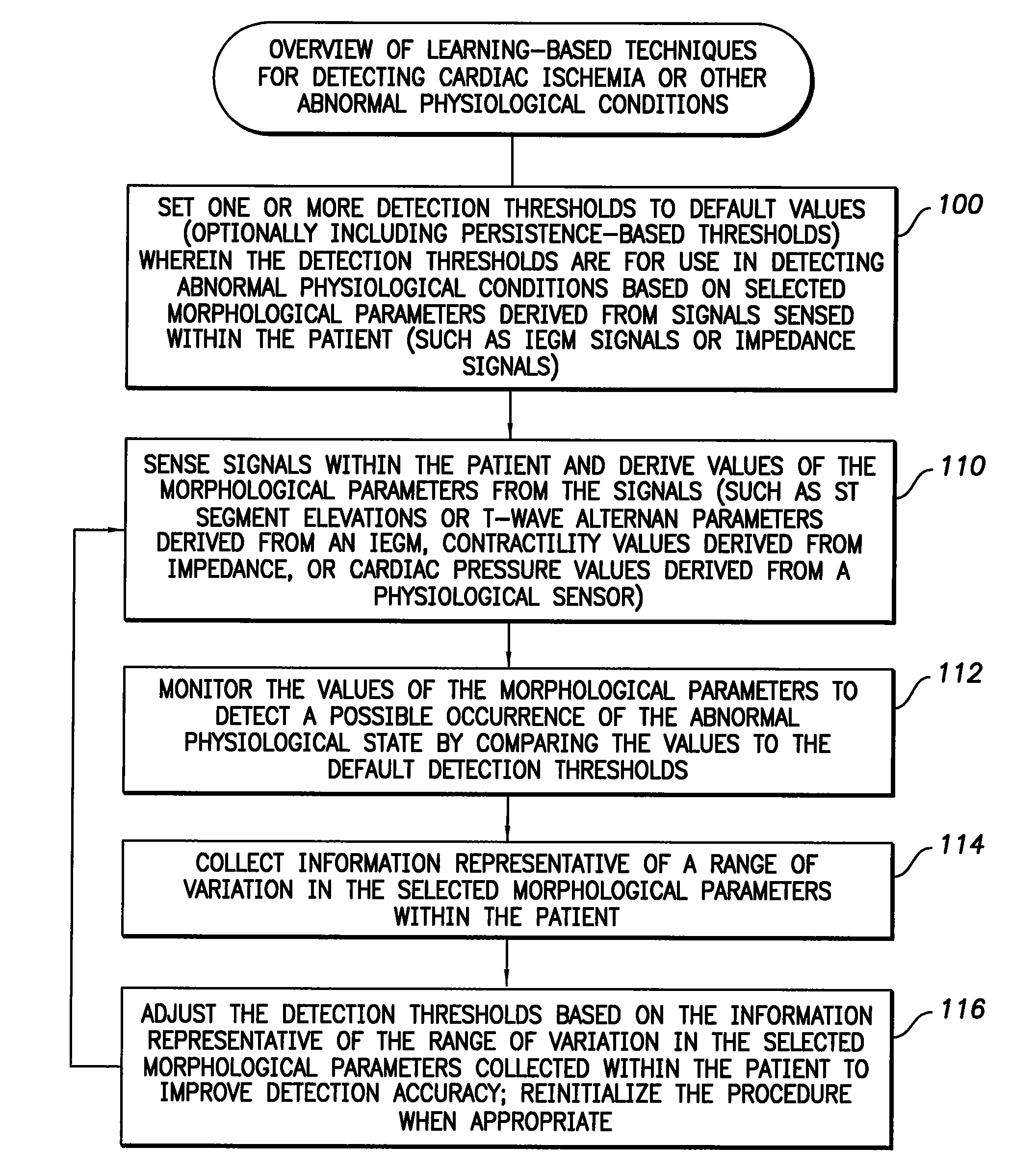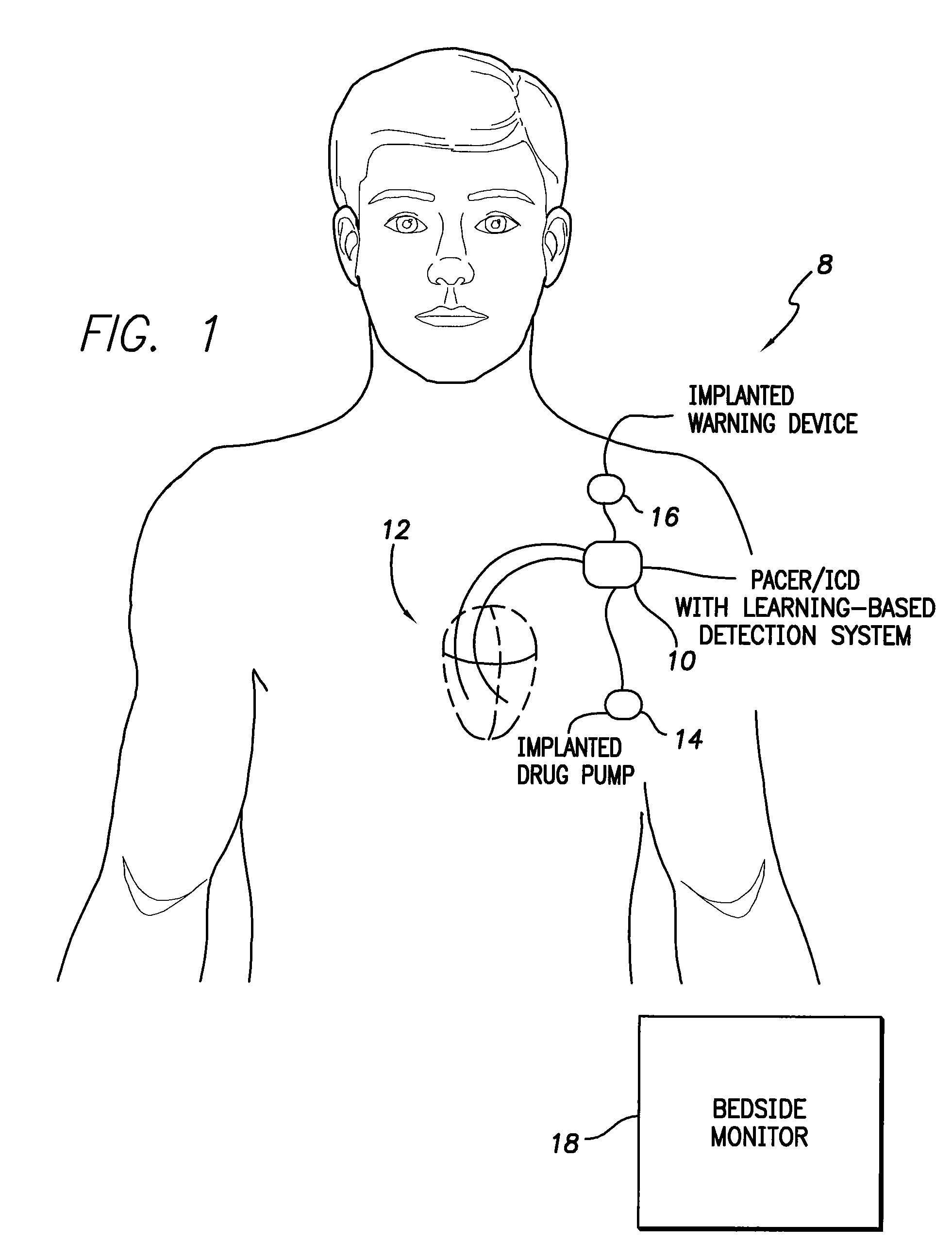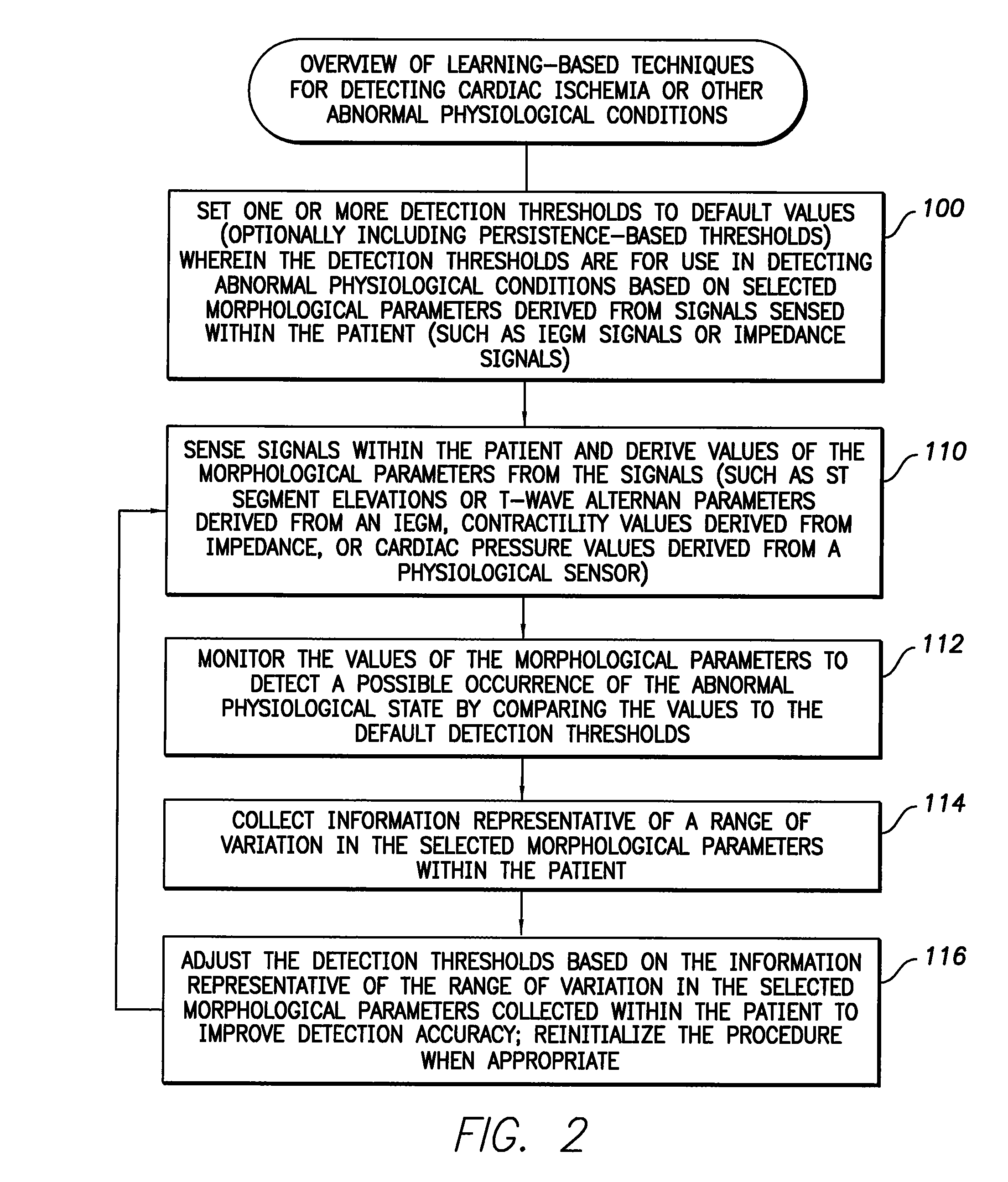System and method for adaptively adjusting cardiac ischemia detection thresholds and other detection thresholds used by an implantable medical device
a medical device and adaptive adjustment technology, applied in the field of implantable medical devices, can solve the problems of tissue death, cardiac muscle deterioration, and tissue death, and the heart muscle beyond the blockage no longer receives oxygen
- Summary
- Abstract
- Description
- Claims
- Application Information
AI Technical Summary
Benefits of technology
Problems solved by technology
Method used
Image
Examples
Embodiment Construction
[0038]The following description includes the best mode presently contemplated for practicing the invention. This description is not to be taken in a limiting sense but is made merely to describe general principles of the invention. The scope of the invention should be ascertained with reference to the issued claims. In the description of the invention that follows, like numerals or reference designators are used to refer to like parts or elements throughout.
Overview of Implantable System
[0039]FIG. 1 illustrates an implantable medical system 8 capable of detecting cardiac ischemia or other abnormal physiological conditions such as hypoglycemia or hyperglycemia. To this end, system 8 includes a pacer / ICD 10 or other cardiac stimulation device equipped with a learning-based detection system equipped to adaptively adjust detection thresholds for use in detecting cardiac ischemia for optimal use within the particular patient in which the system is implanted. The learning-based detection ...
PUM
 Login to View More
Login to View More Abstract
Description
Claims
Application Information
 Login to View More
Login to View More - R&D
- Intellectual Property
- Life Sciences
- Materials
- Tech Scout
- Unparalleled Data Quality
- Higher Quality Content
- 60% Fewer Hallucinations
Browse by: Latest US Patents, China's latest patents, Technical Efficacy Thesaurus, Application Domain, Technology Topic, Popular Technical Reports.
© 2025 PatSnap. All rights reserved.Legal|Privacy policy|Modern Slavery Act Transparency Statement|Sitemap|About US| Contact US: help@patsnap.com



